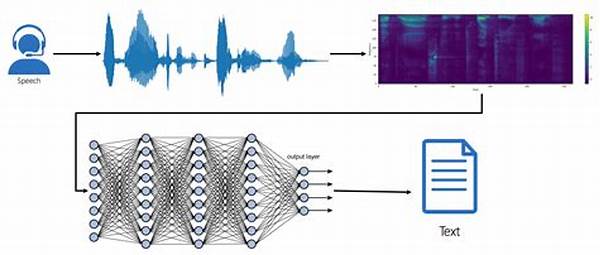Speech Recognition and Machine Learning
In today’s fast-paced digital world, the demand for seamless, intuitive technology has skyrocketed. Enter speech recognition and machine learning—a dynamic duo that has revolutionized how we interact with our devices. Picture this: you’re busy in the kitchen, your hands are covered in flour, and you suddenly remember you need to add milk to your shopping list. No problem! Just say, “Add milk to my shopping list,” and voilà, task accomplished. This is the power of speech recognition, underpinned by the engine of machine learning. Together, they are transforming voice commands into actions, personalizing experiences, and making technology accessible to everyone, even those who struggle with traditional interfaces.
Speech recognition and machine learning have come a long way from their humble beginnings. In the early days, voice recognition systems were clunky and often failed to understand basic commands, let alone complex conversations. Fast forward to today, where tech giants like Google, Amazon, and Apple are harnessing sophisticated machine learning algorithms to enhance voice recognition capabilities. These systems now boast impressive accuracy rates, learning and adapting from each interaction, making them more intuitive and tailored to individual users.
For businesses, this technology is more than a novelty—it’s a strategic asset. Companies are leveraging speech recognition and machine learning to improve customer service, streamline operations, and even gain insights into consumer behavior. Imagine a world where calling customer support no longer involves navigating through endless menu options but simply stating your issue and instantly being directed to the right solution. The efficiency, satisfaction, and loyalty this could foster are invaluable. The future of speech recognition and machine learning is bright, and for businesses and consumers alike, it promises a more connected, efficient, and user-friendly digital experience.
How Speech Recognition and Machine Learning are Changing the World
The impact of speech recognition and machine learning extends beyond convenience; it’s reshaping industries and transforming lives. From helping those with disabilities to providing new ways to interact with technology, the applications are endless.
Deep Dive into Speech Recognition and Machine Learning
The inception of speech recognition and machine learning marks a turning point in technological history. This groundbreaking alliance has made it possible for our devices to understand and respond in human languages, a feat once confined to science fiction novels. But how does all this magic happen? At the heart of it lies complex algorithms and vast datasets that feed machine learning models, teaching them nuances of human speech, accents, languages, and even emotions. It’s like enrolling in an intensive language school but on a colossal scale and with the genius of artificial intelligence investing countless hours into learning and adapting.
For most of us, this innovation translates to remarkable daily conveniences. Take your morning routine, for example. Your virtual assistant can set your alarm, read the news headlines, or play your favorite podcast—all without you having to lift a finger. As mundane as these tasks may seem, they save us precious time and have quietly woven themselves into the fabric of our lives, thanks to speech recognition and machine learning.
Businesses, too, are riding this wave of innovation. Companies are investing in these technologies to enhance customer interactions and optimize operations. Imagine being able to derive consumer sentiment from recorded customer calls, turning qualitative data into quantifiable insights. Or consider augmented customer service centers, where AI-driven models process queries faster than a human ever could, revolutionizing the customer support paradigm.
The Power of Speech
An essential component of speech recognition and machine learning is its capability to adapt and improve. This adaptability paves the way for new applications. In healthcare, for example, voice-controlled systems assist surgeons in retrieving patient data without compromising sterility. Meanwhile, in education, interactive language platforms offer personalized tutoring based on individual learning paces, making education more accessible worldwide.
Constant Evolution of Technology
The continual advancements in machine learning ensure that speech recognition technology remains at the forefront of innovation. The future holds even more promising developments, possibly leading to fully autonomous systems that can mediate conversations just as seamlessly as a human.
Key Features of Speech Recognition and Machine Learning
The prowess of speech recognition and machine learning is evident in various areas, each contributing uniquely to its success:
With these features, it’s clear why speech recognition and machine learning are at the forefront of technology innovation.
The Rising Demand for Voice Technology
The demand for speech recognition and machine learning has surged, fueled by an increasing reliance on technology and a desire for seamless human-computer interaction. Everywhere we look, from smart homes to voice-activated wearables, this technology is becoming ubiquitous. Researchers and developers are constantly pushing the envelope to refine and enhance these systems, resulting in a robust demand for skilled professionals in this field.
The benefits extend beyond convenience or novelty. In a world where time is of the essence, speech recognition and machine learning provide solutions that save time, streamline processes, and enhance productivity. This offers businesses a competitive edge and empowers consumers to make the most of their daily routines.
As voice technology continues to evolve, we can expect even more groundbreaking developments on the horizon, each promising to reshape our interactions with the digital world.

